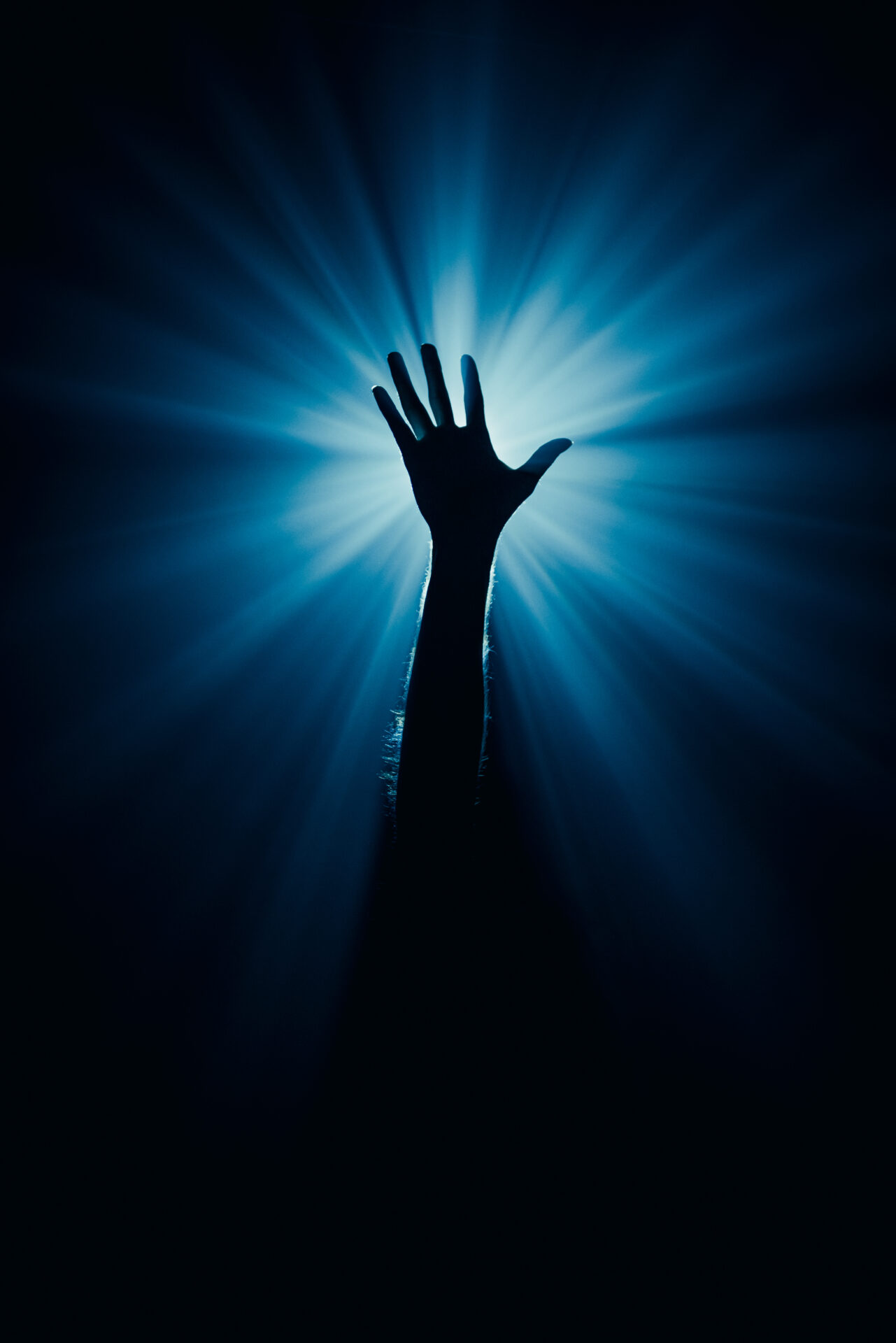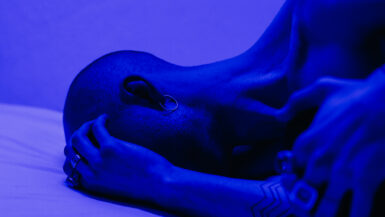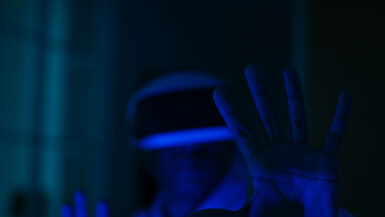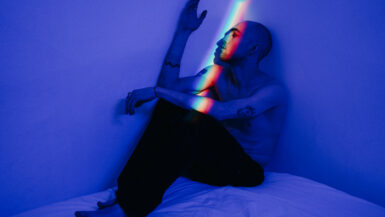In today’s fast-paced world, the increasing dependency on electronic devices has led to an unprecedented level of exposure to blue light, especially during these stressful times. This pervasive blue light has been identified as a key factor affecting our sleep patterns and overall productivity. In the following article, “Overcoming Blue Light’s Impact on Sleep During Stressful Times,” we delve into the science behind blue light’s effects on our circadian rhythm, sleep quality, and mental performance. By providing practical solutions and strategies, we aim to empower our readers to make informed choices and regain control over their sleep and productivity in the face of modern-day challenges.
Tips to Boost Productivity Despite Blue Light Exposure
In this section, we will discuss various actionable tips to help mitigate the impact of blue light exposure on your sleep and productivity. From practical workplace adjustments to personal habits, these strategies can help you maintain a healthy balance between screen time and rest, ultimately leading to improved mental performance and wellbeing.
Opt for Blue Light Blocking Technologies
One of the easiest ways to reduce blue light exposure is by using blue light blocking technologies. These can come in the form of screen protectors, glasses, or software applications that filter out blue light on your devices. By incorporating these tools into your daily routine, you can protect your eyes and maintain your circadian rhythm without sacrificing essential screen time.
Establish a Consistent Sleep Schedule
Creating a consistent sleep schedule can help your body adjust to a regular rhythm, making it easier to fall asleep and wake up at the same time each day. By sticking to a set bedtime and wake-up time – even on weekends – you can help train your body to better handle the effects of blue light exposure.
Manage Your Evening Screen Time
It’s essential to be mindful of your screen time in the evenings, as excessive exposure to blue light before bedtime can disrupt your sleep cycle. Limiting or avoiding screens for at least an hour before bed can help improve the quality of your sleep. Consider engaging in relaxing activities, such as reading a book or taking a warm bath, to help your body wind down.
Experiment with Light Therapy
Light therapy, which involves exposure to bright, blue-tinted light during the day, can help regulate your circadian rhythm and counteract the effects of blue light exposure. By mimicking natural sunlight, light therapy can help improve your energy levels and alertness throughout the day, boosting productivity and overall wellbeing.
Learn from Diverse Perspectives
Blue Light and Sleep: Exploring Cultural Differences provides valuable insights into how various cultures approach the issue of blue light exposure and sleep. By understanding different perspectives and practices, you can discover new strategies to manage your own exposure and develop a personalized approach to maintaining a healthy sleep cycle.
By adopting these practical tips and making a conscious effort to balance screen time with proper rest, you can minimize the negative effects of blue light on your sleep and productivity. Embrace these strategies to ensure you maintain a healthy and productive lifestyle despite our increasingly digital world.
Creating a Sleep-Friendly Environment in Stressful Times
As we continue to navigate these uncertain times, it’s more important than ever to prioritize our sleep and overall well-being. Establishing a sleep-friendly environment can significantly improve the quality of our rest, counteracting the negative effects of blue light exposure and stress. In this section, we’ll explore various strategies to optimize your sleep setting, ensuring you wake up feeling refreshed and ready to tackle each day.
Develop a Relaxing Bedtime Routine
Establishing a calming pre-sleep routine can signal to your body that it’s time to wind down and prepare for rest. This may include activities such as reading a book, practicing meditation, or engaging in gentle stretching exercises. By consistently incorporating these relaxation techniques into your nightly routine, you’ll create a strong association between these activities and sleep, making it easier to drift off each night.
Optimize Your Sleep Environment
Creating a comfortable and inviting sleep space is crucial for a restful night’s sleep. Ensure your bedroom is cool, dark, and quiet, as these conditions promote optimal sleep. Invest in blackout curtains or a sleep mask to block out any unwanted light, and consider using a white noise machine or earplugs to eliminate disruptions from outside noise.
Be Mindful of Bedroom Electronics
Electronic devices emit blue light, which can interfere with your sleep cycle. To create a sleep-friendly environment, remove electronic devices such as smartphones, tablets, and laptops from your bedroom, or at least keep them out of reach while you sleep. Alternatively, you can set your devices to “night mode” or use blue light filtering apps to minimize blue light exposure.
Choose the Right Bedding and Sleep Accessories
Your choice of bedding and sleep accessories can greatly impact your sleep quality. Opt for breathable, moisture-wicking sheets and pillows that provide proper support for your head and neck. In addition, consider using a weighted blanket to promote feelings of security and relaxation, as studies have shown that they can improve sleep quality in times of stress.
Consider Aromatherapy for Enhanced Relaxation
Integrating aromatherapy into your sleep environment can help create a calming atmosphere and promote relaxation. Essential oils such as lavender, chamomile, and bergamot have been shown to have soothing effects on the nervous system, making them excellent choices for improving sleep quality. Use a diffuser or spray to disperse these calming scents throughout your bedroom and enhance your overall sleep experience.
By implementing these strategies and creating a sleep-friendly environment, you’ll be well-equipped to overcome the challenges of blue light exposure and stress, ultimately promoting better sleep and overall well-being. Embrace these changes and enjoy the benefits of a restful, rejuvenating night’s sleep in even the most difficult times.
Understanding Blue Light and Its Effects on Sleep
Before delving into the strategies to combat the impact of blue light on sleep, it is crucial to understand the science behind this phenomenon. In this section, we will explore what blue light is, how it affects our sleep, the connection between blue light and our circadian rhythm, and the potential long-term consequences of excessive exposure.
What is Blue Light and Where Does It Come From?
Blue light is a high-energy, short-wavelength light that is emitted by the sun, as well as artificial sources such as LED lights, smartphones, tablets, and computer screens. While blue light is present in natural sunlight and plays a vital role in maintaining our circadian rhythm, the widespread use of electronic devices has led to an increase in artificial blue light exposure, especially during nighttime hours when it can interfere with our sleep.
Blue Light and the Circadian Rhythm: A Delicate Balance
Our circadian rhythm is the internal clock that regulates our sleep-wake cycle, and it is profoundly influenced by light exposure. Blue light, in particular, plays a crucial role in keeping our circadian rhythm in sync with the natural day-night cycle. During the day, blue light exposure helps us feel alert and energized, while in the evening, reduced blue light signals our body to produce the sleep hormone melatonin, preparing us for rest.
However, excessive exposure to artificial blue light in the evening can disrupt this delicate balance, suppressing melatonin production and making it more challenging to fall asleep and maintain a healthy sleep cycle.
How Blue Light Affects Sleep Quality
Research has shown that exposure to blue light before bedtime can lead to reduced sleep quality, as it interferes with the natural onset of melatonin production. This can result in difficulty falling asleep, fragmented sleep, and overall decreased sleep duration. Over time, these disruptions to our sleep patterns can lead to a variety of health issues, including fatigue, decreased cognitive performance, and an increased risk of mood disorders.
The Long-term Consequences of Excessive Blue Light Exposure
Consistently exposing ourselves to high levels of artificial blue light, particularly in the evening, can have long-term consequences on our overall health and well-being. In addition to the immediate impact on sleep quality, chronic sleep disruptions have been linked to increased risks of obesity, diabetes, cardiovascular disease, and mood disorders such as depression and anxiety.
By gaining a comprehensive understanding of blue light and its effects on sleep, we can take the necessary steps to mitigate its impact and prioritize our overall health and well-being. Armed with this knowledge, we can make informed decisions about our screen time habits and implement effective strategies to maintain a healthy sleep cycle in our increasingly digital lives.
How Stress Contributes to Sleep Disruption
While blue light exposure certainly plays a significant role in sleep disruption, stress is another major factor that can negatively impact our ability to achieve restful and restorative sleep. In this subsection, we will explore the intricate relationship between stress and sleep, as well as delve into the ways in which stress can exacerbate the effects of blue light on our sleep patterns. Understanding the link between stress and sleep will provide a comprehensive approach to overcoming sleep disruptions during stressful times.
The Vicious Cycle of Stress and Poor Sleep
Stress and sleep are intrinsically linked, often creating a vicious cycle where one exacerbates the other. When we experience stress, our body’s natural response is to release stress hormones such as cortisol, which can interfere with our ability to fall asleep and stay asleep. Poor sleep, in turn, can lead to increased stress levels, creating a feedback loop that perpetuates sleep disruption and negatively impacts our overall well-being.
How Stress Amplifies Blue Light’s Effects on Sleep
Stress and blue light exposure can have a compounding effect on sleep disruption. When we are stressed, our bodies may be more sensitive to the sleep-disrupting effects of blue light, making it even more challenging to achieve restorative sleep. Additionally, people often turn to electronic devices as a means of coping with stress, leading to increased blue light exposure in the evenings when it can be most detrimental to our sleep patterns.
Stress-Induced Insomnia and Sleep Disturbances
Chronic stress can lead to insomnia and other sleep disturbances, such as restless leg syndrome or sleep apnea. Insomnia is characterized by difficulty falling asleep, staying asleep, or waking up too early, resulting in poor sleep quality and insufficient rest. Persistent sleep disturbances can have a significant impact on our mental and physical health, further exacerbating stress and perpetuating the cycle of poor sleep.
Managing Stress for Better Sleep
Finding effective ways to manage and cope with stress can significantly improve sleep quality and help to break the cycle of stress-induced sleep disruption. Techniques such as mindfulness meditation, deep breathing exercises, and progressive muscle relaxation can help to reduce stress levels and promote relaxation before bedtime. Incorporating these practices into your daily routine, along with the strategies discussed earlier to combat blue light exposure, will enhance your ability to navigate stressful times while maintaining quality sleep.
Recognizing the interconnected nature of stress and sleep is vital in addressing the challenges of sleep disruption during stressful times. By implementing stress-reduction techniques and adopting strategies to minimize blue light exposure, you can effectively break the cycle of stress and poor sleep, ultimately fostering improved overall health and well-being in the face of life’s challenges.
Blue Light Blocking Techniques for Better Sleep
As we continue to explore ways to overcome the impact of blue light on sleep during stressful times, it’s important to highlight various blue light blocking techniques that can significantly improve the quality of our rest. By adopting these methods, you can reduce your exposure to blue light and promote a healthy sleep cycle, ultimately improving your overall well-being. In this section, we will discuss several effective blue light blocking techniques, providing you with the tools to create a sleep-friendly environment and enhance your ability to achieve restful, restorative sleep.
Invest in Blue Light Blocking Glasses
Blue light blocking glasses are designed to filter out a significant amount of blue light emitted from screens and artificial light sources. By wearing these glasses in the evening, you can protect your eyes from excessive blue light exposure and reduce its impact on your sleep. Various stylish and comfortable options are available on the market, making it easy to incorporate this essential accessory into your daily routine.
Utilize Blue Light Filtering Apps and Software
Several apps and software programs are available to help reduce blue light emissions from your electronic devices. These tools work by adjusting the color temperature of your screens, emitting warmer tones that are less disruptive to your sleep cycle. Examples of such applications include f.lux for computers and Night Shift for iOS devices. By using these tools, you can continue to use your devices in the evening without compromising the quality of your sleep.
Adjust Your Device Settings
Many smartphones, tablets, and computers now come with built-in settings to help minimize blue light exposure. Features such as Night Mode or Night Light can be easily activated in your device’s display settings, allowing you to adjust the color temperature and brightness of your screen. By customizing these settings to your preferences, you can create a more sleep-friendly environment while still enjoying your favorite devices.
Replace Traditional Light Bulbs with Sleep-Friendly Options
Consider swapping out traditional light bulbs in your home for options that emit warmer, sleep-friendly tones. Many LED bulbs now come with adjustable color temperatures or even built-in blue light filters, allowing you to create a more relaxing atmosphere in your living spaces. By making this simple change, you can reduce your overall blue light exposure and promote a better night’s sleep.
Create a Screen-Free Bedroom
One of the most effective ways to reduce blue light exposure is to create a screen-free sanctuary in your bedroom. By removing electronic devices such as televisions, smartphones, and laptops from your sleep environment, you can minimize distractions and ensure your body receives the necessary cues to wind down and prepare for rest. Establishing your bedroom as a dedicated space for relaxation and sleep can have a significant impact on your ability to achieve restorative rest.
By implementing these blue light blocking techniques, you can take an active role in combating the negative effects of blue light on your sleep during stressful times. Embrace these strategies and enjoy the benefits of improved sleep quality, increased energy, and enhanced overall well-being.





Leave a reply